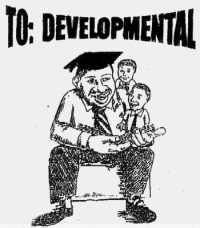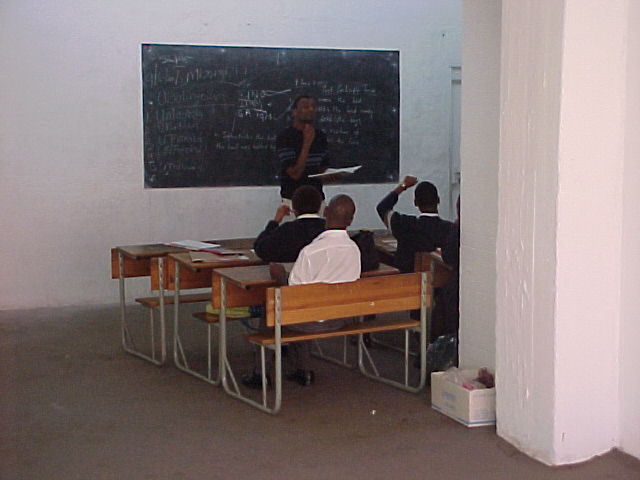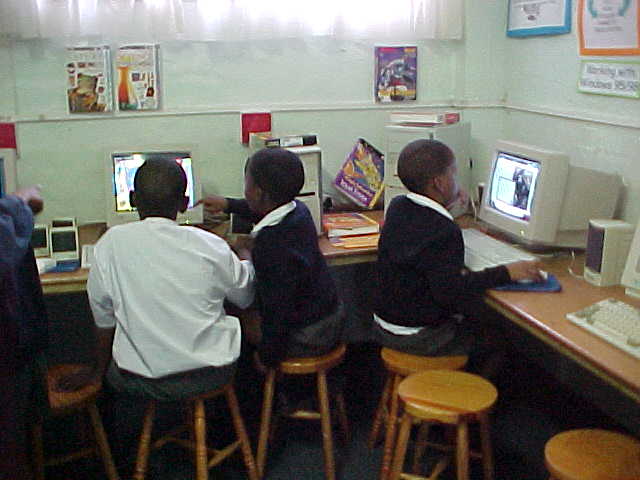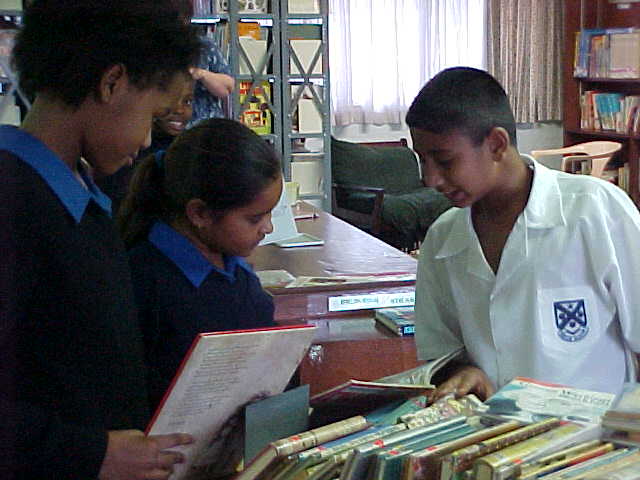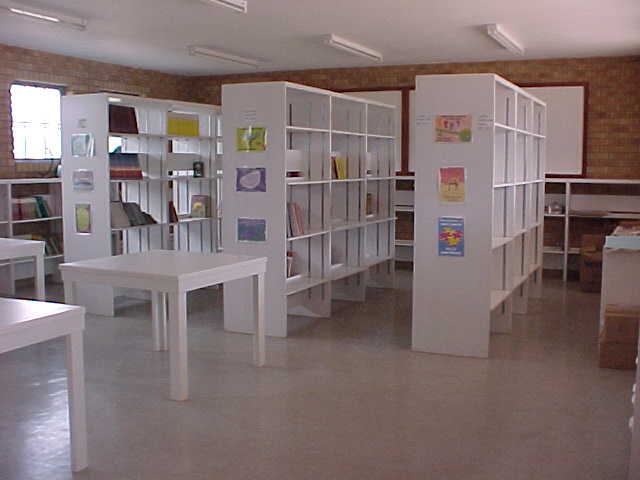| Using contrast to stimulate thinking | |||||||
|
Here is an interesting idea which we can use to
stimulate learners to ask questions and to think more critically.
Present two contrasting items side by side. These could be drawings,
photographs, poems or merely ideas. We recommend that you go to
this site: http://www.fno.org/oct99/resonance.html
Imagine hearing about a school where the children took notes into the exam in order to cheat. Would you agree that such cheating was wrong? If we said that cheating creates feelings of bitterness among other learners and gives false expectations, most of you would probably agree. However, if we then said the educator who set that exam was incompetent and wrote questions that were factually incorrect. He would also only accept one answer. We are not surprised the children cheated! We did not blame them! This would probably cause a lot of discussion and questioning. When we pretend to be on the other side of an argument in order to stimulate discussion, we say we are playing devil's advocate. By now you have probably seen that dissonance can create thoughtful discussion or debate. This simple concept can easily be transferred to the classroom situation. Look at the photographs of the two classrooms below.
Is there some dissonance created that makes you compare, contrast and question?
By creating dissonance or discord you can create a stimulus to creative thinking and learning. Think of some topics for discussion, which will allow you to prepare the ground for harmony and thereafter allow you to present the opposite argument and thus stimulate your learners or colleagues to think more deeply about the issue. Here are some examples:
We are thrown off balance. Our minds are intrigued . . . our curiosities awakened. We want to resolve the dissonance . . . bring things back into harmony or resonance." McKenzie, FNO Vol 9|No 2|October|1999 Developing skills of comparison In order to be able to use this idea of dissonance and harmony, our learners need to develop the skills of comparison. Perhaps you remember that this is one of the higher order thinking skills. We are often faced with choices and need to make decisions, weighing up several factors. We have to compare several options. This is decision making. At other times we need to analyse the differences and similarities between things in order to help our thinking. Comparisons are therefore also the tools of analysis. Comparing things is a thinking skill which is used in many situations. It is tool that is used for deciding what to do, where to go or even what to buy. We need to see both sides of a situation and therefore need to be able to see similarities and differences. When you wish learners to develop the skill of comparison you should try to choose something that is interesting for them. You could for example use the purchase of a music centre or TV and allow them to make comparisons from advertisements that are distributed via newspapers from different shops. They will then have to use their skills of analysis and comparison and will have to priorities in order to make the decision as to which one to buy. Remind yourself what was said in the earlier section decision-making.
|

